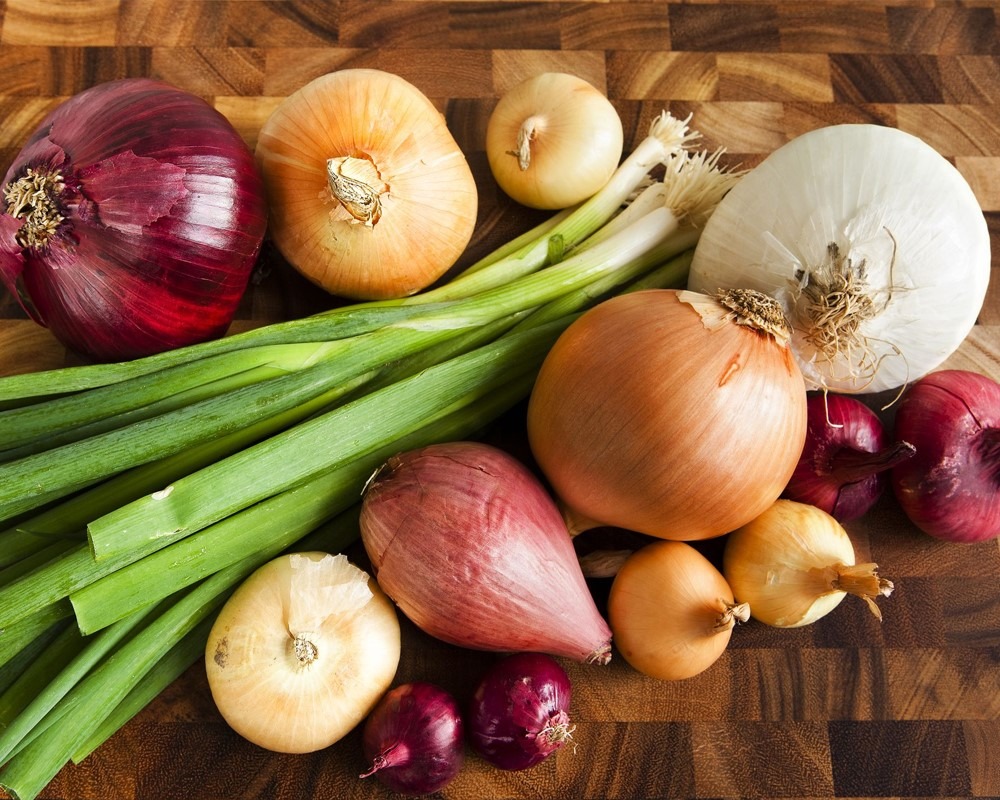Onions (scientific name: Allium cepa) are one of the oldest edible vegetables in the world and Iran. This crop was cultivated in Egypt three thousand years B.C. and according to some documents, workers who used to build the Egyptian pyramids were used onions as staple food. The onion belongs to the Alliaceae family and is a two-year-old plant with weak bush growth and hollow cylindrical leaves. The leaves are yellowish-green and grow in a narrow flat row, alternate in shape.
The most important environmental factors affecting bulb formation are temperature and day length. Accordingly, onion cultivars are divided into three groups: long-day, mid-day and short-day. The importance of this is in determining when to plant. For example, long-day varieties such as red onions are usually planted in April. In the fall, the leaves disappear and the outer shell of the onion becomes dry and crisp, typically harvested at this time.
Historical use
Historians are believed that onions have been a food source for thousands of years. In the Bronze Age habitats, traces of onion remnants were found alongside the date palm and fig nucleus, dating back to 5000 years B.C. However, they aren’t sure that these were planted onions.
Archaeological evidence, affirms that onions were probably planted in ancient Egypt about 2000 years ago, along with leeks and garlic. The workers who made the Egyptian pyramids probably ate radishes and onions.
Onions are simply propagated, transported and stored. The ancient Egyptians worshiped it and believed that spherical shapes and concentric rings symbolized eternal life. On the basis of signs of onion that found in the Ramses IV tomb, onions were even used in the burial of the Egyptians. In ancient Greece, athletes ate plenty of onions. Because they believed it would easier make blood balance and they also applied onions to Roman gladiator muscles to strengthen them. In the Middle Ages, in Europe onions were on the side of cabbage and beans, one of the main vegetable foods of the poor and rich. It was also prescribed for the treatment of headache, snakebite, and onion hair loss.
Large-scale cultivation
Onions grow better in fertile, well-drained soil. Clay and sand mixed with decaying plants are good for cultivation onions because of having low sulfur, while clay soils usually contain high sulfur content and produce spicy onions. Onions need a lot of nutrients in the soil to grow. Nitrogen and potash can be used during growing season intervals. The last application of nitrogen is at least 4 weeks before picking onions.
Onion varieties in Iran
Golden or Yellow Onion
The most famous member of the onion family, which has golden brown skin and its inner layers are white or yellowish white. This type of spicy has a sharp taste and is the best option for cooking. These onions are usually grown and harvested between spring and autumn, but they are stored in warehouses, these onions have a very high shelf life but you should keep them in a cool and dark place. That’s why it’s available in all seasons. Yellow onion in the world of onions is the same as jeans in the people world, known in all countries and can be used in all food.
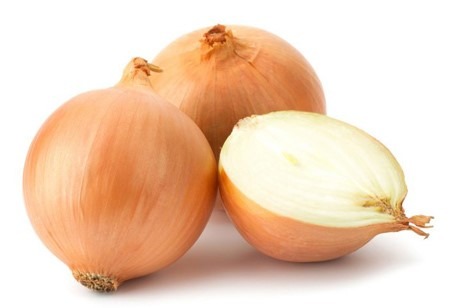
Red onion
This beautiful colored onion with a red velvety coating that has a white brain. Because of its mild and sweet taste, it is the best option for raw consumption. Red onions have more flavonoids and fiber than white and yellow onions. Because of its beautiful color you can use it to decorate a plate. A good choice for grilling, salads and sandwiches. These onions are available all seasons and can be stored at home for 3 to 4 months.
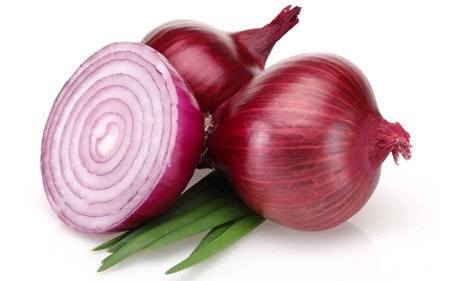
White onion
This onion is perfectly white in color and has a mild and cool taste. The difference between white and yellow is that white onions are sweeter and have less shelf life than yellow onions. Generally white and red are shorter than yellow onions because of their higher sugar content. In terms of usage it is almost like red onion, can be eaten raw or used in salads. This onion is the best choice for Mexican dishes. Small white onions are used in soup, casserole and kebab, this type is known as boiled onions.
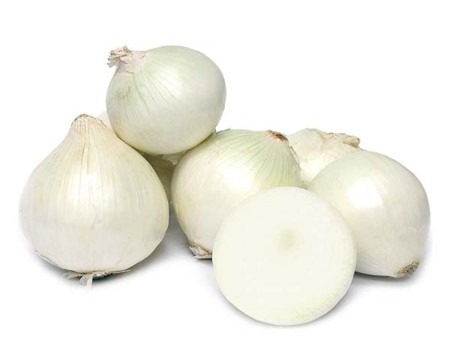
Vidalia or sweet onion
This onion is originally American and was first cultivated in the southeastern region of Georgia. The onions are named Vidalia because they were historically grown in the town of Vidalia, Georgia. It is sweet, crunchy and juicy and tastes a bit spicy. Because of its sweet taste and sugar it is great for making caramel onions. Also, large Vidalia bulbs are a great choice for making onion rings.
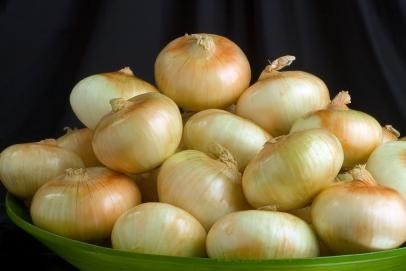
Pear-shaped onion
These onions are small and sweet and have a special and delectable taste. Available in white, yellow and red, but white is more common. These onions were originally grown in home gardens in Germany and Italy. The biggest discomfort about using fresh pear-shaped onions is peeling them. Soak them in boiling water for ease of use and gently remove the skin with your fingers. These onions are a good choice for pickling, grilling and steaming.
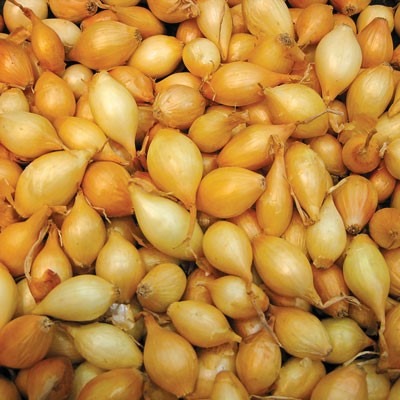
green onion
green onion is made up of long green leaves and a small onion at the end. The white part of the onion is sharper and you can combine it with ginger and garlic and use it to flavor foods, as well as the onion leaves in the salad.
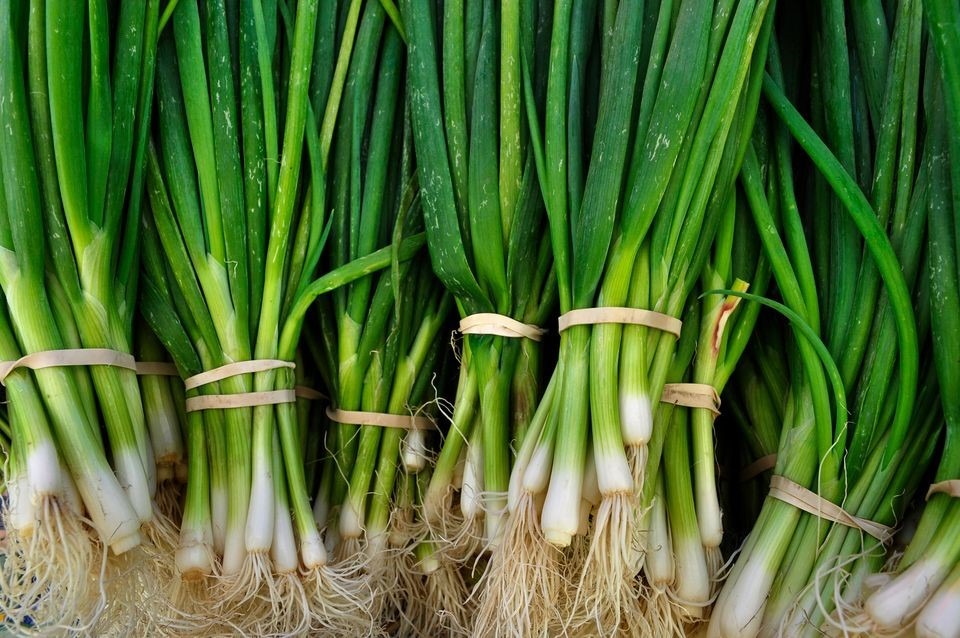
Shallot
Many of you may confuse Shallot with red onions. Shallot is a small onion with brown skin and purple texture and the core is composed of two or more separate parts. Shallot has a strong, garlic-like taste and its layers are thin, which helps to cut it down very finely. Shallot is excellent for use in salads and sauces.
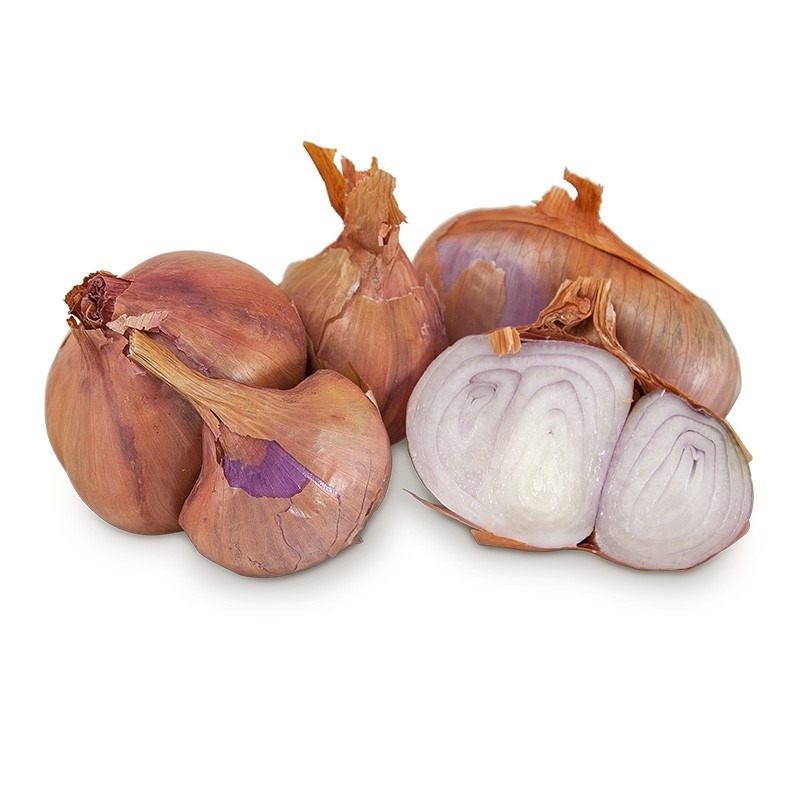
Onion Properties for Health
In onion varieties, each with a stronger flavor are also more prominent. Onions, in addition to being one of the main ingredients in most of today’s foods, have unique benefits and contain natural sugars, vitamins A, C, E and B6. Minerals found in this vegetable include sodium, potassium, iron and fiber. You should also know that onions are a rich source of folic acid.
Each 100 grams of onion contains:
44 Calories
1.4 grams of fiber
4.25 grams of natural sugar
1.1 grams of protein
9.35 grams of carbohydrates The onion’s health properties are just as complex as the appearance of this vegetable. Almost all types of onions on the market, regardless of their type and color, have unique benefits. Some of these benefits will be interesting to you, others will surprise you immediately, and most will definitely encourage you to consume more onions.
- Onions are high in antioxidants
Photochemicals are natural ingredients that found in fresh fruits and vegetables and have made them good and healthy foods. Some of them have antioxidant effects, just like the herbal chemicals found in onions. You may be surprised to hear this, but the onion is actually the richest food you can find in terms of its antioxidant content.
Lemons, blueberries, parsley or any other edible things that mentioned in commercial advertising as a complete source of antioxidants hasn’t antioxidant as much as onions. Also, the interesting thing is that one of the reasons why onions are high in antioxidants is the presence of sulfur compounds, the same compounds that make the onion smell unpleasant.
- Onions – strong anti-cancer
Obviously the antioxidant property mentioned above can help fight cancer and a variety of tumors, but there is a certain substance in the onion that causes it to have a double carcinogenic effect. This combination is called quercetin. The most prominent effect of quercetin on health is its ability to fight cancer, and if you are motivated to consume more onions, this can be a decisive reason for consuming more onions in your diet.
- It produces good cholesterol (HDL)
Often when you take advantage of this amazing effect of onion when you eat it raw, so always remember this before putting the onion in your diet. An easy way to help raise good cholesterol levels (and therefore, lower bad cholesterol levels) is to put a few pieces of it on the food. You can also sprinkle a few drops of lemon juice on it to get more of the onion’s properties.
- decreasing stomach ulcers and swelling
Onions eliminate free radicals; this onion, along with the healing power of this high-quality vegetable, helps to protect against stomach ulcers. Onions can also prevent gastritis from developing in the long run, keeping the inner lining of the stomach healthy and maintaining its acid balance.
- Preventing diabetes by regulating blood sugar
Chromium is another valuable ingredient in onions and the properties of onions that make blood sugar better and more stable. This has a positive effect on maintaining the body’s natural sensitivity to insulin and preventing diabetes, regulating appetite and preventing obesity.
- Onions increase bone density in postmenopausal women
The beneficial effects of onions on bone health are not only limited by the high amount of calcium present in it, but also by the flavonoids in it, which allow calcium to reach specific areas of the body that need it most. So, as another health-promoting onion, osteoporosis can be prevented.
- The onion reduces inflammation and fights infections
Flavonoids and compounds that cause sharp taste in raw onions, reduce inflammation, both inside and outside the body. As you probably know, inflammation causes variety of diseases in your body. The red onion has all the amazing properties and nutritional value mentioned above, but it also has additional benefits. Here are the properties.
- Red onions have a greater effect on lowering bad blood cholesterol
The flavonoids that cause red onion in this type of onion have a surprising effect on lowering bad cholesterol and stimulating good cholesterol production in the body, and are therefore very valuable for maintaining body health.
- Red onions are a rich source of iron, calcium, and other valuable minerals
Always overlooked for its unique properties, red onions are rich in calcium, iron, manganese, magnesium, potassium, and vitamins C, K, and B6. Rarely can all of these valuable ingredients be found in nature together, so take advantage of the nutritious and useful components of the red onion. The onion is like a potent vitamin pill, which is essential for maintaining bone density and healthy blood circulation.
- Red onions relieve asthma, allergies and osteoarthritis
One of the unique and beneficial effects of red onions for health that is not present in white onions is their ability to improve the condition of people with asthma, arthritis, and allergies. This is also due to the anti-inflammatory properties of all types of onions, but this onion has another reason: a compound called ONA blocks the activity of immune system cells and thereby cures these diseases.
Production
Unbelievable, but according to FAO, each of us consumes more than 10 kilograms of onions annually, it is a well-known and high-yielding vegetable that produces 98 million tons annually in 170 countries and devotes more than 5.5 million hectares Land of the World.
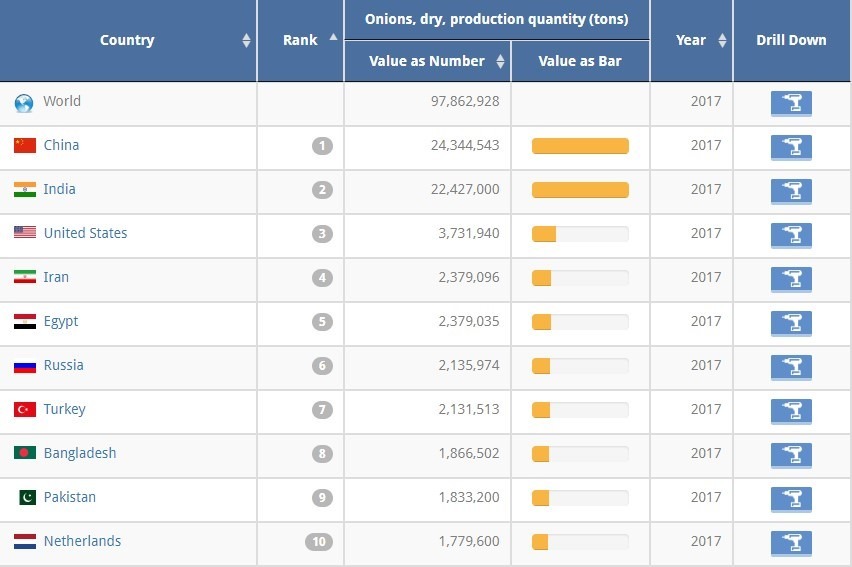
At present, China is the largest producer of this edible product with more than 24 million tons of onions annually. The country allocates more than 1 million hectares each year with yields of 21 tons per hectare. Although the Chinese are the largest onion producers, they are second in the global export market.
According to the latest report in 2017, Iran by producing around 2.5 million tones is the forth country in the world in production of onions.
East Azarbaijan province has the highest level of onion cultivation which accounts for 24% of this crop, followed by Isfahan, Fars, Sistan and Baluchestan, Khorasan, Hormozgan and Khuzestan provinces. Iranian onions are mostly exported to Asian and European countries. Iran has onions in all four seasons. That is why it can be exported every 4 seasons, which is a great opportunity.
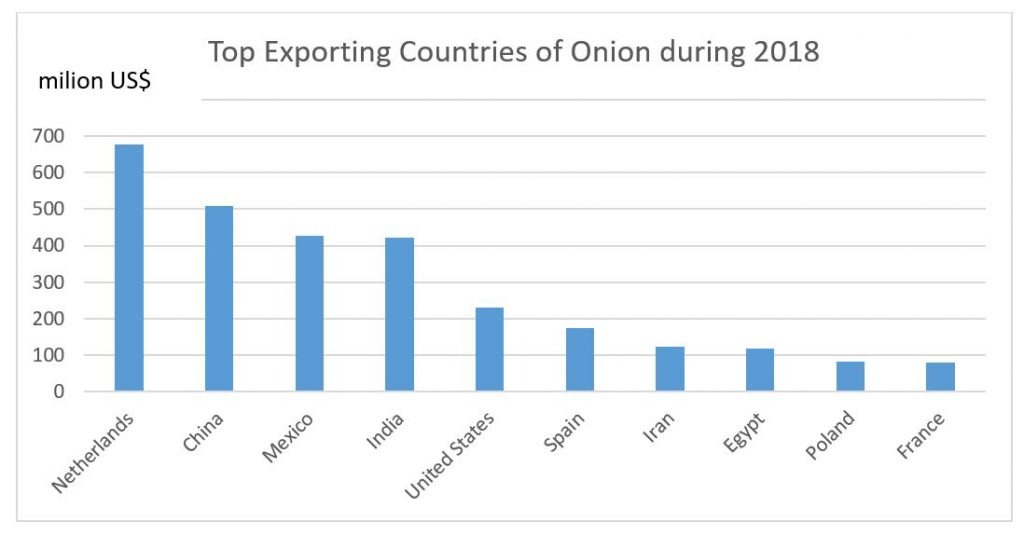
‘kala sepid tarabar’ as an international trading & transportation company in Iran focuses on the export of the agricultural and fresh fruit. Our experiences and resume reflect our quality of work and honesty.
As you know we also are exporters of golden and white onions that are so delicious and desirable. we have supplied and exported onions from high-grade farms of Hamedan and Khorasan in sizes of medium and big in mesh and bag packaging. The following videos relate to loading 6 containers of superfine onions for exporting to Pakistan in December 2019. So far we have also exported the same cargo to India fast and safe in October.

